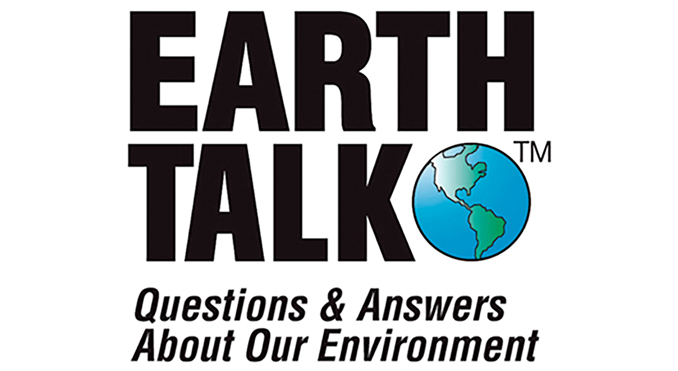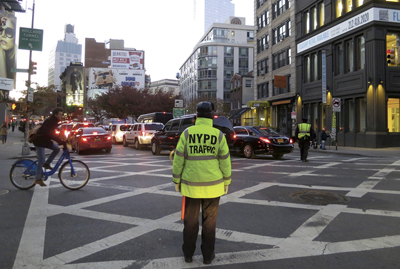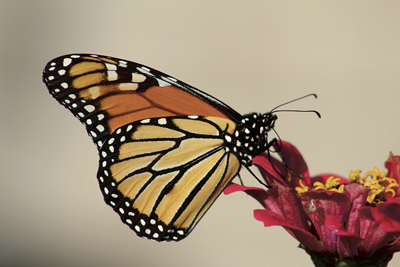
Dear EarthTalk: What exactly is congestion pricing as just implemented in New York City and how will it help the environment? Should other cities also adopt this policy? ~ H.M., San Diego, CA

New York City recently became the first U.S. city to implement congestion pricing, a strategy aimed to reduce traffic in extreme congested areas by charging drivers a fee during peak hours. This approach not only helps alleviate traffic but also provides notable environmental benefits.
Congestion pricing seeks to manage demand for road space in busy areas. Drivers pay a fee to enter these zones with electronic tolling systems that track vehicles and collect payments. The revenue generated is usually invested into improving public transportation and infrastructure. For example, New York plans to issue these funds toward improving its subway system, which millions of residents depend on daily.
Reducing the number of vehicles on the road improves air quality. Fewer cars mean lower greenhouse gas emissions and less air pollution, major contributors to climate change and public health problems. Cleaner air also means fewer respiratory issues for residents mainly in the areas near major traffic hubs.
Beyond environmental gains, congestion pricing makes cities more tolerable. If traffic congestion decreases, it leads to faster commute times and less stress for drivers. Streets become quieter and more friendly for pedestrians. Walking and biking are encouraged more if streets are convivial. Cities like London have seen a 30 percent reduction in traffic volumes after executing congestion pricing; there have also been crucial improvements in public transit reliability.
Critics of congestion pricing usually point to worries about fairness. This is generally notable for low-income drivers who may struggle to afford the fees. Small businesses that rely on vehicle deliveries also worry about added costs. However, advocates of congestion pricing argue that the advantages outweigh these challenges. Investments in public transit can make commuting more attainable and affordable for everybody; programs offering discounts or exemptions can help mitigate the impact on vulnerable groups.
Individuals can play a key role in helping congestion pricing succeed. Reduce your own driving by using public transit, biking or walking when possible. Participate in community discussions or campaigns that support congestion pricing. Volunteer or donate to groups advocating for sustainable urban planning. Moreover, you can educate others about the benefits of congestion pricing and how it improves urban life. Support local policies that fund clean energy solutions or improve bike and pedestrian infrastructure. Together, we can create cleaner and less congested urban environments for everyone.
MORE INFORMATION: https://better-cities.org; https://ops.fhwa.dot.gov/congestionpricing.
Dear EarthTalk: What are some ways music gear makers are going green? ~ Peter B., Groton, CT

Music gear production, from collecting materials, producing gear and packaging with excessive plastic, has numerous negative environmental effects. Collecting wood has led to overharvesting at an unsustainable rate, an increasingly urgent issue for forests and woodlands. Plastic and metal waste have risen, too. These issues have led many music gear makers to implement sustainable changes.
The good news is that some instrument producers have begun harvesting wood from dead or dying trees to prevent the overharvesting of rich woodlands, while others have shifted toward less-used “alternative tonewoods” like basswood and kaya. To decrease metal waste in sourcing for strings, makers are beginning to purchase strings in the form of rods.
Small changes are also happening in the production are. Manufacturers have replaced traditional materials with eco-friendly options when producing the picks, straps and other accessories. It is now commonplace to find bioplastic or even shell for guitar picks and vegan leather for straps. String company Stringjoy now has a recycling program, encouraging players to mail back old strings to repurpose the material.
When packaging manufactured goods, music gear makers have begun using paper tape, boxes and envelopes over the traditionally used plastic. Unique innovations have also made packaging greener, such as color-coding each guitar string and its packaging to avoid the environmentally harmful practice of purchasing an entirely new set of guitar strings when only one needs a replacement.
Together these changes have led to a plethora of significant positive outcomes. Increased use of alternative wood sources has caused a notable decrease in pressure on certain wood species commonly used for instruments like mahogany, rosewood and spruce. Moreover, changes made in packaging and material collection have reduced the vast amounts of plastic and metal waste from entering landfills or oceans. Exemplified by the color-coded guitar strings, unique innovations have also made an impact, with the director of product management at music instrument company D’Addario, Brian Vance, commenting that color-coding has eliminated total packaging mass by 70 percent.
More can still be done. Companies advocate for government policies cementing environmentally friendly decisions made by manufacturers, or work toward simpler changes by implementing more recycling programs for their customers. Ultimately, strategic efforts have significantly boosted the sustainability of music gear production, proving that these efforts must be continued and expanded.
MORE INFORMATION: https://frontiergroup.org/articles/the-rise-of-sustainable-guitars-how-an-industry-is-innovating-to-save-our-forests/
Dear EarthTalk: What is the status of the monarch butterfly in the U.S. and is it listed as threatened or endangered? ~ M. Smith, Raleigh, NC

The monarch butterfly, known for its awe-inspiring migration across North America, has become a symbol of both ecological wonder and environmental decline. Once abundant across the continent, their numbers have plummeted in recent decades, raising concerns about the species’ long-term survival.
In 2014, the Center for Biological Diversity (CBD), a leading conservation group, petitioned the U.S. Fish & Wildlife Service (FWS) to list the monarch as “threatened.” FSW launched a review of the butterfly’s status, concluding six years later that listing was warranted although other species took priority. In 2022, CBD filed a federal lawsuit and won a settlement calling for the government to decide whether to list monarchs by late 2024, which FSW did in December, finally granted “threatened” status to the species.
The monarch’s eastern population, which migrates from the U.S. and Canada to central Mexico for the winter, has experienced a staggering 80 percent drop over the past 20 years, largely due to habitat loss, especially the destruction of milkweed—the sole food source for monarch larvae. The widespread use of herbicides and pesticides kill both milkweed and other pollinator-friendly plants. Climate is compounding the issue by altering the availability of suitable habitats, affecting migration patterns. The monarch’s western population migrates along the U.S. West Coast to winter in California, and has also seen a drastic decline. It has not yet been listed as threatened or endangered by FWS, but the western monarch is still considered to be in serious jeopardy, with some estimates suggesting a 99 percent decline since the 1980s.
Being listed as “threatened” means that while monarchs are not yet in immediate danger of extinction, their populations are at significant risk. This status has prompted federal agencies to prioritize monarch conservation, leading to a variety of initiatives aimed at halting or reversing the decline. FWS has created a recovery plan, which includes restoring migratory and breeding habitats, reducing pesticide use and raising public awareness about the importance of monarchs and pollinators in general.
Despite official recognition of the problem and action, habitat destruction continues at an alarming rate, exacerbated by logging and urban sprawl. In response, conservation and governmental agencies and researchers are all working toward restoring monarch habitats and promoting the planting of milkweed.
Everyone can play a role in helping the monarchs. Readers can help by planting milkweed in your garden, backyard or community space. You can also reduce pesticide use in your yard and choose organic gardening practices. Support organizations working to protect monarch habitats and advocate for policies that protect pollinators and raise awareness about their decline can also create broader change.
MORE INFORMATION:
https://www.fws.gov/initiative/pollinators/monarchs; https://www.monarchwatch.org; https://monarchjointventure.org.
EarthTalk® is produced by Roddy Scheer & Doug Moss for the 501(c)3 nonprofit EarthTalk. See more at https://emagazine.com. To donate, visit https://earthtalk.org. Send questions to: question@earthtalk.org.
